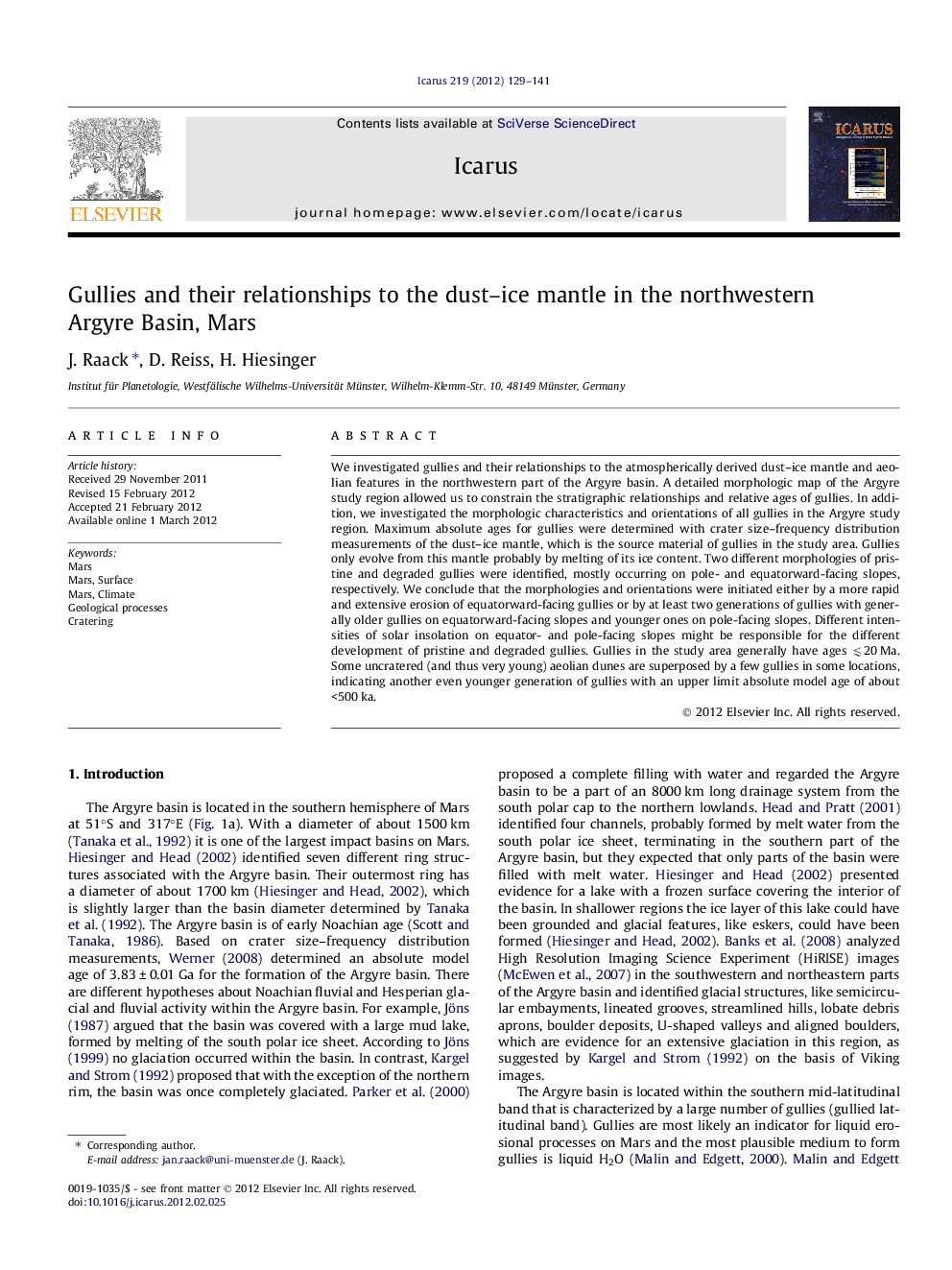| Article ID | Journal | Published Year | Pages | File Type |
|---|---|---|---|---|
| 1773482 | Icarus | 2012 | 13 Pages |
We investigated gullies and their relationships to the atmospherically derived dust–ice mantle and aeolian features in the northwestern part of the Argyre basin. A detailed morphologic map of the Argyre study region allowed us to constrain the stratigraphic relationships and relative ages of gullies. In addition, we investigated the morphologic characteristics and orientations of all gullies in the Argyre study region. Maximum absolute ages for gullies were determined with crater size–frequency distribution measurements of the dust–ice mantle, which is the source material of gullies in the study area. Gullies only evolve from this mantle probably by melting of its ice content. Two different morphologies of pristine and degraded gullies were identified, mostly occurring on pole- and equatorward-facing slopes, respectively. We conclude that the morphologies and orientations were initiated either by a more rapid and extensive erosion of equatorward-facing gullies or by at least two generations of gullies with generally older gullies on equatorward-facing slopes and younger ones on pole-facing slopes. Different intensities of solar insolation on equator- and pole-facing slopes might be responsible for the different development of pristine and degraded gullies. Gullies in the study area generally have ages ≲20 Ma. Some uncratered (and thus very young) aeolian dunes are superposed by a few gullies in some locations, indicating another even younger generation of gullies with an upper limit absolute model age of about <500 ka.
► We studied gullies and their relationships to the dust–ice mantle and aeolian features in the northwestern Argyre basin. ► Gullies in the study region only evolve from the dust–ice mantle. ► Variations in morphologies and orientations point to differences in the timing of gullies or their formation rate. ► Ages of gullies in the study region are generally younger than ∼20 Ma. ► Some very young gullies with ages of about several 100 ka were also observed.
